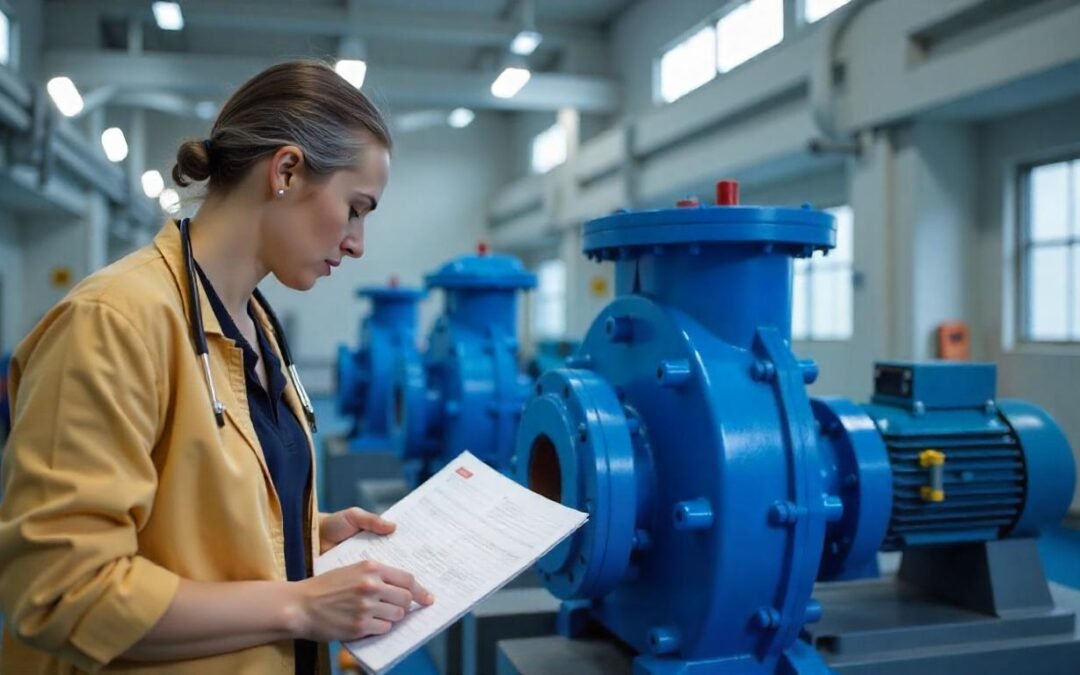Energy audits for pump systems in industrial and commercial settings are essential for optimizing energy usage, reducing operational costs, and extending equipment life. This process involves a systematic assessment of pump performance, energy consumption, and system design to identify inefficiencies and recommend practical improvements.
Initial Data Collection
The audit begins by gathering detailed information about the pump system:
- Pump specifications: type, size, rated capacity, and manufacturer data.
- Operating conditions: run times, duty cycles, and seasonal load variations.
- Energy usage records: historical electricity bills and energy meter readings.
- Fluid characteristics: viscosity, temperature, flow rate, and required head pressure.
Collecting this baseline data allows auditors to understand the context and requirements of the pumping system.
Site Inspection and Physical Evaluation
Auditors perform an on-site assessment to observe the system in operation. Key activities include:
- Inspecting the pump, piping layout, valves, and associated components for signs of wear, corrosion, misalignment, or leaks.
- Evaluating maintenance practices and checking for missing or outdated maintenance logs.
- Identifying outdated equipment or manual controls that hinder performance.
Performance Testing and Measurement
Using precision tools such as flow meters, pressure gauges, and power analyzers, auditors measure:
- Actual flow rate delivered versus design flow.
- Head (pressure) being generated.
- Input electrical power to the motor.
This data is used to calculate pump efficiency:
Efficiency = (Hydraulic Power Output / Electrical Power Input) × 100
These values help determine whether the pump is underperforming or oversized for its application.
Energy Use Analysis and Efficiency Evaluation
The collected performance data is analyzed against manufacturer specifications and ideal system benchmarks. Common findings may include:
- Excess energy use due to throttling valves instead of variable controls.
- Pumps running continuously even during low-demand periods.
- Significant energy losses in long or poorly designed pipe runs.
Energy consumption patterns are charted to identify peak demand periods and anomalies.
System Optimization Assessment
Beyond the pump itself, the broader system is evaluated:
- Control systems: Are variable frequency drives (VFDs) installed?
- Automation and scheduling: Is the system running based on demand or outdated schedules?
- Redundancy and backup systems: Are there unnecessary pumps running in parallel?
Recommendations for Energy Savings
Based on the audit findings, specific recommendations are made. These may include:
- Replacing inefficient or oversized pumps with right-sized, high-efficiency models.
- Installing VFDs to modulate pump speed in response to real-time demand.
- Redesigning the piping layout to minimize frictional losses.
- Fixing leaks, insulating pipes, and upgrading seals or valves.
- Shifting operations to off-peak energy hours when possible.
Each recommendation is backed by data to estimate expected energy savings.
Cost-Benefit and ROI Analysis
To help decision-makers prioritize improvements, the audit includes a financial analysis:
- Energy savings estimates in kWh and monetary value.
- Payback period for each investment.
- ROI projections over the equipment’s expected lifespan.
Audit Reporting and Action Plan
A detailed report is prepared that includes:
- Executive summary of findings.
- Charts, tables, and system diagrams for clarity.
- A step-by-step improvement plan with estimated costs, timelines, and potential benefits.
This report serves as a roadmap for facility managers and engineers.
Implementation and Follow-Up
Once approved, the facility can proceed with implementing the recommended measures. It’s important to:
- Assign responsibilities to qualified technicians or contractors.
- Monitor changes through energy meters and performance dashboards.
- Reassess efficiency at regular intervals to track ongoing savings.

